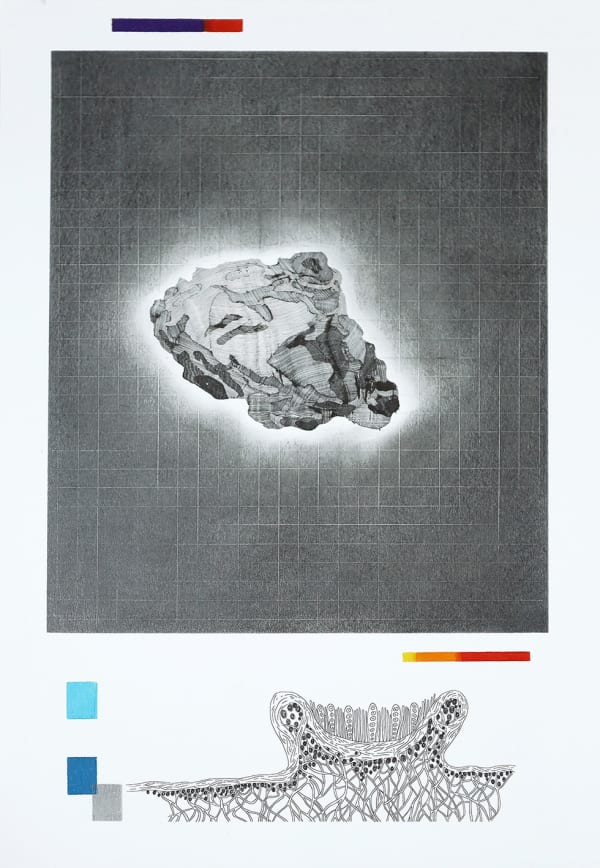-
-

-
The online exhibition was generously supported by: The Culturele Activiteitenpremie of the Vlaamse Gemeenschap, Galeria Arsenał, Białystok and Harlan Levey Projects. We would also like to thank Dr. Tomasz Jakubowski and the Polish Academy of Sciences Museum of the Earth in Warsaw for kindly lending meteorites for the show. Thanks also goes out to The National Library of Poland, who lent all the books on view, and to Damon de Backer, for photographing the works.
-
-
Online Studio Visit
Conversation between Amélie Bouvier and Przemysław Strożek in anticipation of Bouvier's exhibition at The Arsenal Gallery in Białystok, Poland.
-
-
 Amélie Bouvier, Lost #1, 2020
Amélie Bouvier, Lost #1, 2020 -
 Amélie Bouvier, Lost #2, 2020
Amélie Bouvier, Lost #2, 2020 -
 Amélie Bouvier, Lost #3, 2020
Amélie Bouvier, Lost #3, 2020 -
 Amélie Bouvier, What We Thought We Saw, 2017
Amélie Bouvier, What We Thought We Saw, 2017 -
 Amélie Bouvier, Under the Veil of the Future, 2017
Amélie Bouvier, Under the Veil of the Future, 2017 -
 Amélie Bouvier, Potentially Hazardous Portraits #1, 2020
Amélie Bouvier, Potentially Hazardous Portraits #1, 2020 -
 Amélie Bouvier, Potentially Hazardous Portraits #2, 2021
Amélie Bouvier, Potentially Hazardous Portraits #2, 2021 -
 Amélie Bouvier, Potentially Hazardous Portraits #3, 2021
Amélie Bouvier, Potentially Hazardous Portraits #3, 2021 -
 Amélie Bouvier, Potentially Hazardous Portraits #4, 2021
Amélie Bouvier, Potentially Hazardous Portraits #4, 2021 -
 Amélie Bouvier, Potentially Hazardous Portraits #5, 2021
Amélie Bouvier, Potentially Hazardous Portraits #5, 2021 -
 Amélie Bouvier, Magnetic Enlightenment #2, 2017
Amélie Bouvier, Magnetic Enlightenment #2, 2017 -
 Amélie Bouvier, Gains & Losses, 2017
Amélie Bouvier, Gains & Losses, 2017 -
 Amélie Bouvier, Where the Sun Goes to Sleep, 2021
Amélie Bouvier, Where the Sun Goes to Sleep, 2021
-
Amélie Bouvier: Where the Sun Goes to Sleep | Galeria Arsenał | Białystok, Poland
Past viewing_room














